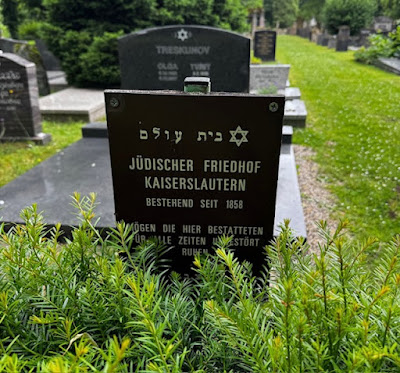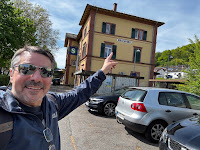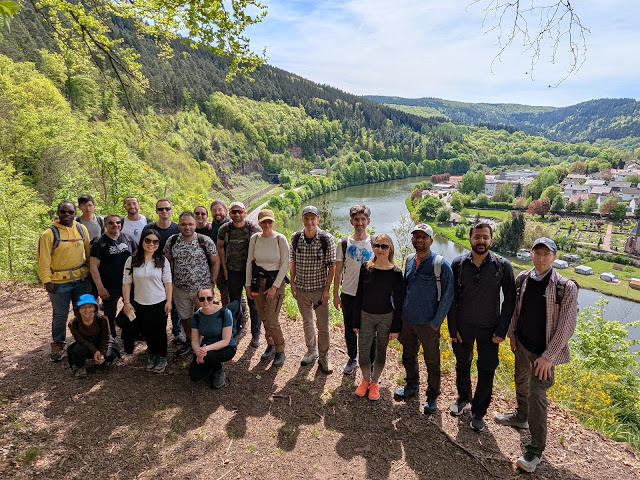Hidden in Plain Sight:
A Walk-Through Jewish Kaiserslautern
While exploring the city I now call home, Kaiserslautern, I came across several Jewish heritage or cultural sites—none of them marked by large plaques or interpretive signs, but all clearly maintained with intention. The Jewish cemetery is identified only by a discreet sign behind a hedge. At first glance, I nearly missed it. But once noticed, its quiet presence is obvious.
This approach—subtle, almost hidden—is not the result of neglect, however. It reflects a deliberate balance between visibility and caution. In a time when antisemitism continues to be a concern across Europe, a lower profile can offer a degree of safety without erasing the past.
In fact, disturbingly, in Kaiserslautern in May 2025, stolpersteine (stumbling blocks) were vandalized, being torn out of the ground and stolen. Stolpelsteine are small brass memorial plaques in sidewalks in front of the last freely chosen places of residence of victims of Nazism. They commemorate people who were persecuted, murdered, deported, expelled or driven to suicide during the Nazi era. Authorities still don't know who the vandals were, and don't know if the crime was driven by antisemitism or anti-Israeli sentiments.
In addition to Germany’s broader political climate—including resurgent far-right parties like AfD—shaping how openly Jewish history is preserved and presented, history and culture are also factors. The city had a smaller prewar Jewish population, and much of its historical infrastructure—including the synagogue—was destroyed during WWII. Unlike cities with large, continuous Jewish communities or strong heritage tourism, Kaiserslautern developed around military and industrial functions, shaping a quieter approach to remembrance. While nearby rural areas may lean conservative, the city itself maintains a respectful, if understated, memory culture—marked by preserved historical sites, memorials, and educational initiatives.
I noticed the same intentional quiet at Hilde-Mattauch-Platz, a small square named for Hilde Mattauch, a Jewish opera singer from Kaiserslautern. After building a promising career in Germany, she was forced to emigrate due to Nazi persecution. She lived in England, then Argentina, where she continued performing and touring. Despite the upheaval, she returned briefly to Kaiserslautern in the 1950s to give concerts. The square named in her honor reflects not only her artistic legacy but also a life marked by resilience and displacement.
The Jewish cultural center was probably the most understated. I only recognized it after passing by several times—its only visible sign being a small menorah in the window. There’s no nameplate, no external marker. But the meaning is clear once seen: it’s a functioning, lived-in space for community life, maintained with discretion for understandable reasons. (In fact, the police are regularly stationed outside of the building).
Another quiet discovery lies beneath the surface—literally. In 1995, during construction work in the city center, archaeologists uncovered the remains of a 14th-century mikveh, a ritual Jewish bath. Hidden for centuries, the site had been buried and forgotten, yet its stones were remarkably well-preserved. Today, it’s viewable through a small glass panel in the pavement—easy to miss unless you're looking for it. There’s a discreet plaque nearby, but no elaborate display. Still, the presence of the mikveh offers a glimpse into a once-vibrant medieval Jewish community in Kaiserslautern, long vanished but not erased. Like so many markers of Jewish life here, it’s a quiet thread in the city’s fabric—a reminder that Jewish history was, and still is, part of this place.
These discoveries demonstrate that remembrance here is not absent—it’s simply quiet, careful, and deliberate. The design of these spaces reflects a thoughtful response to historical memory and present-day realities. In Kaiserslautern, remembrance is integrated into the fabric of the city, not through grand gestures, but through quiet continuity.




.jpg)














